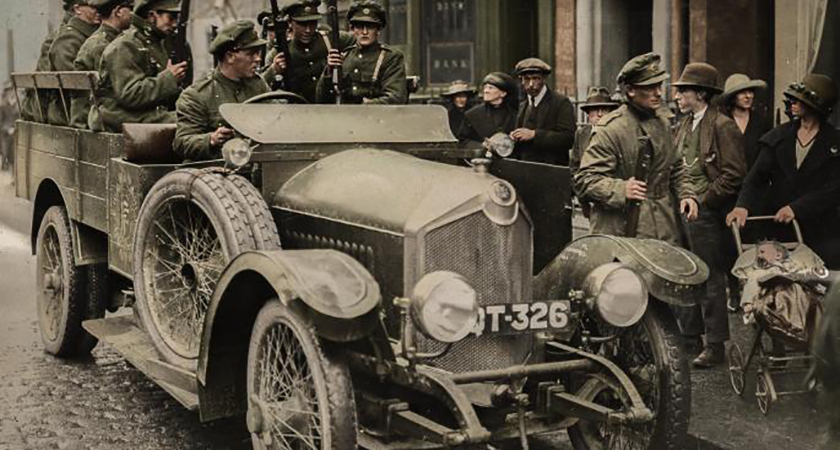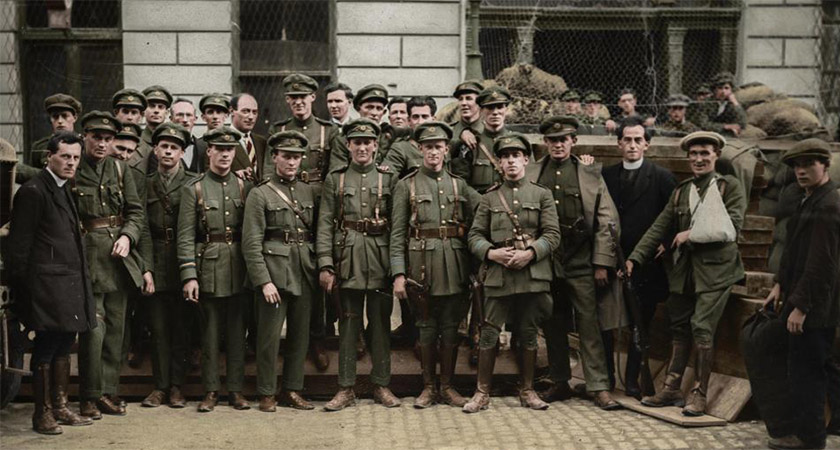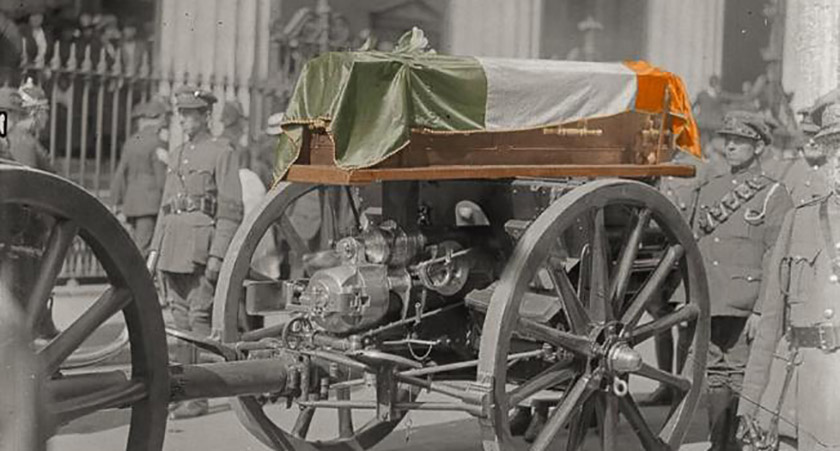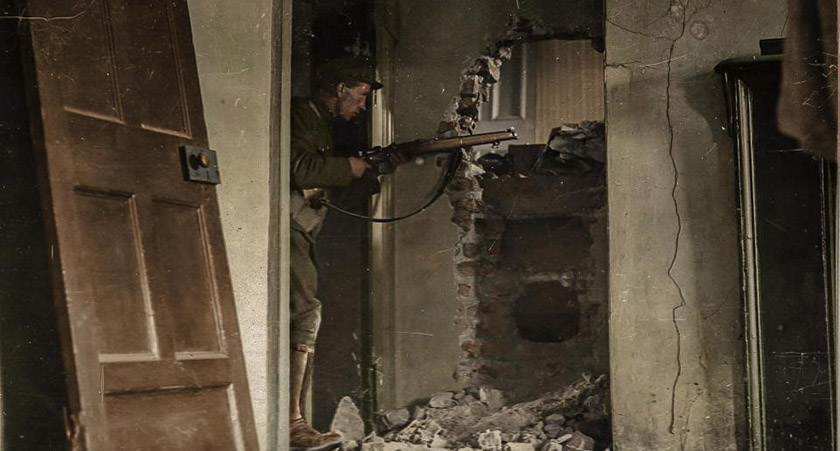THESE incredible retouched photographs from the Irish Civil War shows a war-torn Emerald Isle in a whole new light... and colour.
The iconic images – from the tumultuous period of Irish history following 1916’s Easter Rising – have been carefully colourised for the first time.
The colourisations are the work of John O’Byrne, a photographer from Co. Kildare who painstakingly replaced the black-and-white hues of the original pictures to bring Irish history to life.
They depict street fighting during the Irish Civil War as well as scenes from World War Two and Irish peacekeepers fighting in the Congo in the 1960s.
Mr O’Byrne explained that the project involved months of research into historic uniforms, advertising signs, civilian clothes and buildings to get the reworked images right.
“I had to research the colours that your typical middle-class Irish person would wear in the 1920s, compared to an upper-class person,” Mr O’Byrne told The Irish Post.
“Not all Free State uniforms were the same as they were produced by a few different companies and they all had different shades of green – so it was about getting as close an approximation as I could,” he said.
One of the photographs given a new lease of life by Mr O’Byrne shows Michael Collins dressed in full military attire just prior to his assassination in 1922.
Collins’ killers were never identified beyond reasonable doubt but it is likely they were anti-Treaty ambushers intent on revenge after Collins signed the Anglo-Irish Treaty with Britain in 1921.
The treaty was the main sticking point behind the Civil War – which followed the Irish War of Independence – and claimed the lives of up to 2,000 Irish people between 1922 and 1923.
Other photographs show Free State soldiers relaxing in Dublin, a soldier in a firing position as he searches a damaged house and a weary-eyed young girl staring at the camera.
Photographer O’Byrne hopes the colourised images of Michael Collins, Éamon de Valera and other historic figures will help bring Irish history to life for the general public.
His project is part of a global effort to colourise black-and-white photographs using state-of-the-art software and internet research into the original colours of buildings, fashion and vehicles.
 Soldiers pass civilians including a baby in a pram during the Irish Civil War (Picture: John O'Byrne)
Soldiers pass civilians including a baby in a pram during the Irish Civil War (Picture: John O'Byrne)Other historic figures which have received the colourisation treatment in recent years include 19th century US president Abraham Lincoln and eminent evolutionary scientist Charles Darwin.
Coloured photography did not emerge until around 1935, with the possible exception of the British invention 'Dufaycolor' which produced coloured film for the first time in 1932.
** Originally published on Jun 28, 2021






